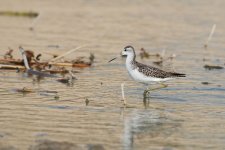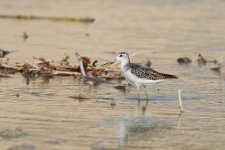-
Welcome to BirdForum, the internet's largest birding community with thousands of members from all over the world. The forums are dedicated to wild birds, birding, binoculars and equipment and all that goes with it.
Please register for an account to take part in the discussions in the forum, post your pictures in the gallery and more.
You are using an out of date browser. It may not display this or other websites correctly.
You should upgrade or use an alternative browser.
You should upgrade or use an alternative browser.
Sandpiper from Al Ain, UAE, 02.09.2017. (1 Viewer)
- Thread starter peterarras
- Start date
More options
Who Replied?Andy Adcock
Worst person on Birdforum

Greenshank.
peterarras
Well-known member
Thanks Andy, sure not a Marsh Sandpiper?
dwatsonbirder
Well-known member
Pale lores = Marsh sand indeed, looks like a bird in transitional plumage to me.Thanks Andy, sure not a Marsh Sandpiper?
foresttwitcher
Virtually unknown member

Gives a 'delicate' impression to me and the bill seems thin like a Marsh Sandpiper. For what it is worth, I thought Greenshank on first look and only went back and reconsidered after others comments. Although, I have to say the bill is long and seems to be upturned. Pales lores and dark cap seem to support Marsh.
Last edited:
dwatsonbirder
Well-known member
An instructive bird which highlights the dangers of assessing size/structure on a lone bird rather than using plumage detail - I'm still confident it is a Marsh sand.
See similar birds below:
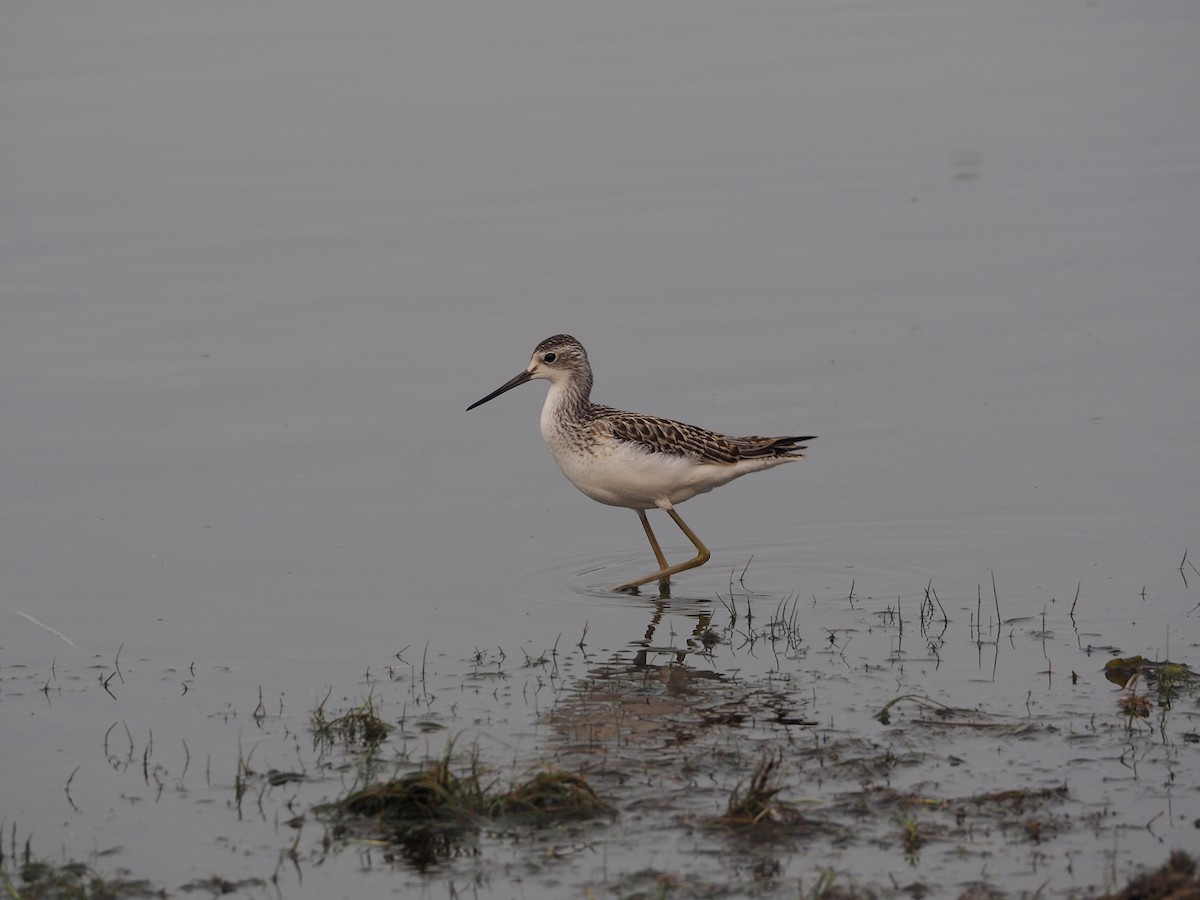
 macaulaylibrary.org
macaulaylibrary.org
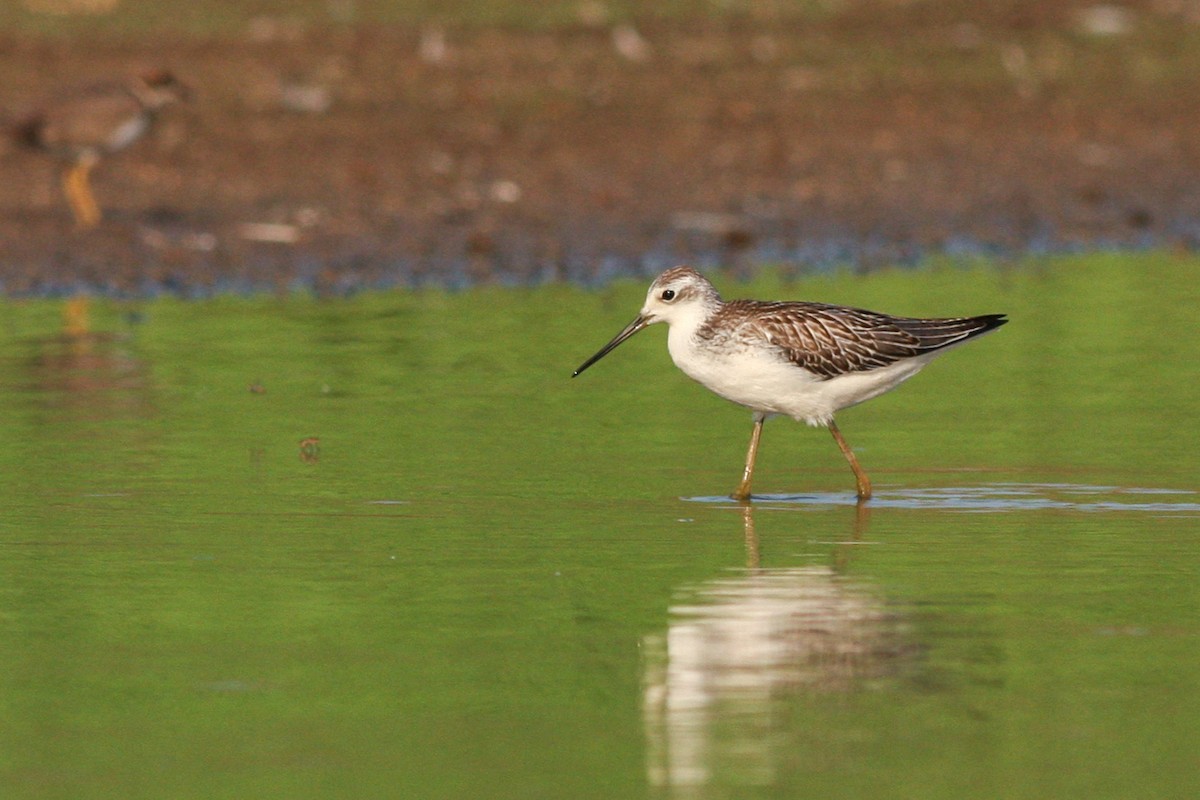
 macaulaylibrary.org
macaulaylibrary.org
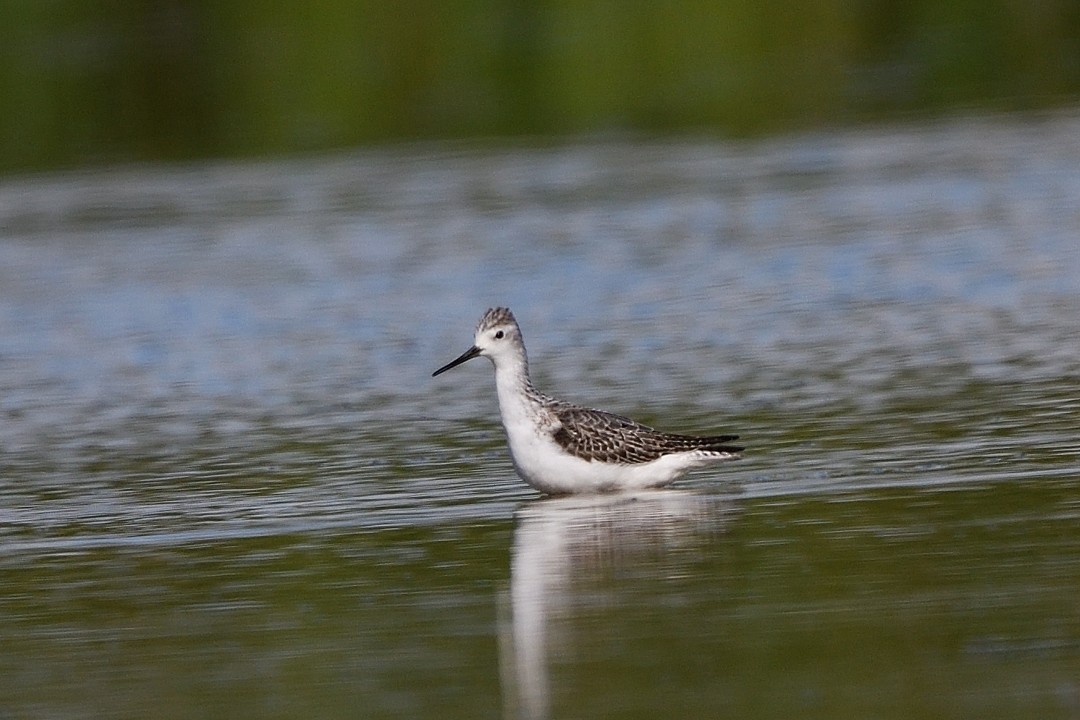
 macaulaylibrary.org
macaulaylibrary.org
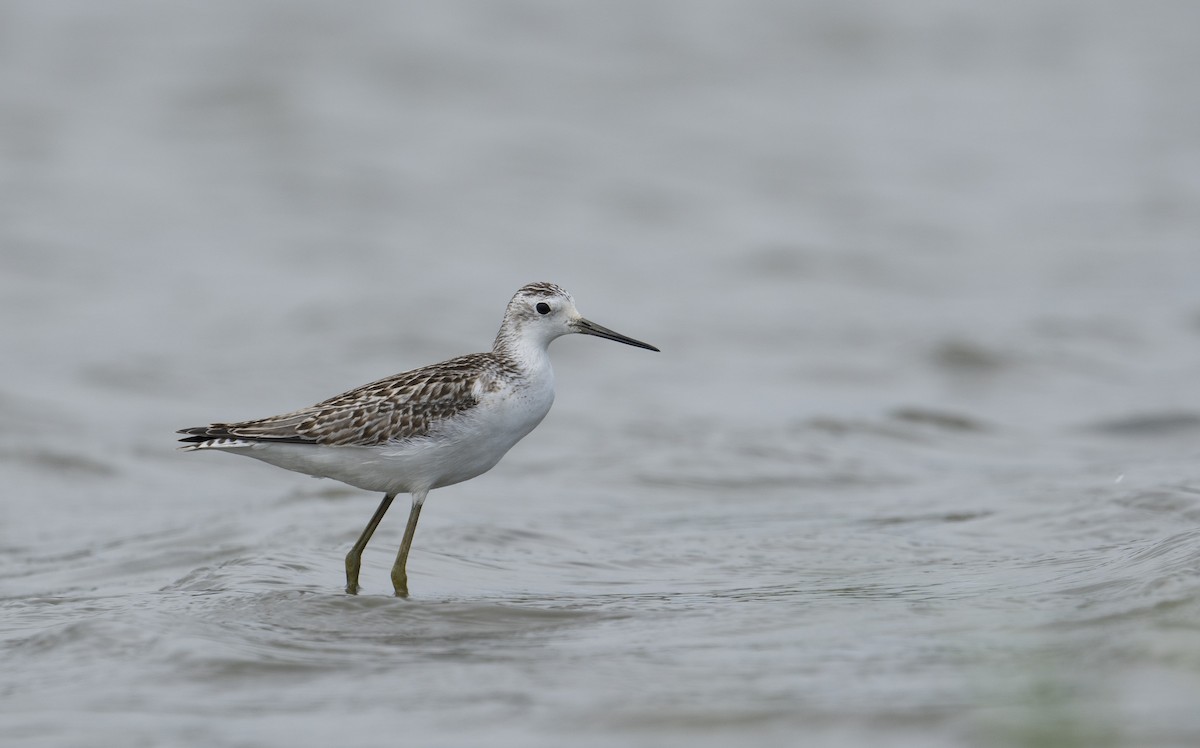
 macaulaylibrary.org
macaulaylibrary.org
See similar birds below:
ML380635441 - Marsh Sandpiper - Macaulay Library
Macaulay Library ML380635441; © Dmitriy Pashchenko; Irkutsk Oblast, Russia
ML373861071 - Marsh Sandpiper - Macaulay Library
Macaulay Library ML373861071; © Rei Segali; HaZafon, Israel
ML371420061 - Marsh Sandpiper - Macaulay Library
Macaulay Library ML371420061; © Manuel Segura Herrero; León, Castilla y León, Spain
ML368749241 - Marsh Sandpiper - Macaulay Library
Macaulay Library ML368749241; © Anonymous; Kujukuri, Chiba, Japan
. . . which have a shorter bill than the OP's.See similar birds below
Just to note: Macauley shows that greenshank usually has a clearly longer bill. However, there's overlap and some greenshanks have [relatively] shorter bills than marsh sands. Ditto thickness. Marsh Sandpiper Macaulay Library ML373861071 is a good example of this: bill is thicker than you might expect [assuming we think it's correctly identified].. . . which have a shorter bill than the OP's.
The feathering where the bill meets the head often has a distinctive shape: in marsh the bill ends "abruptly" [near vertical margin] whereas in greenshank feathering extends out along the bill's top edge. I'm struggling to be sure which is true here, though, given the photo: think perhaps marsh.
I also see some evidence of dark loral feathering [Macauley shows this can be very reduced in some greenshank]. Some marsh sand show darkish feathers here too I note. Where present in marsh, this seems to point to a place in front of the eye. In greenshank dark feathers point to the eye. In the OP pic, dark feathers seem to follow marsh pattern.
On balance these characters suggest marsh. However, I feel general jizz and placement/size of eye feels like greenshank. I found a Macauley greenshank plumage which was closest to this too. So I'm on fence. Not obvious suggest.
Yes but you can find images of marsh sand which look similar. If very pronounced, then it's greenshank. Otherwise, it might be an extreme marsh individual. I'm unclear about this particular image.The bill of the Common Greenshank is slightly up-turned.
BirdLife Bendigo-Echuca AGM and End of Year Function | BirdLife Australia
BirdLife Australia is dedicated to creating a bright future for Australia's birds.www.birdlife.org.au
jbpixels
Well-known member
The page contains a description which perfectly supports my first idea when I saw these two pictures. Everything about its beak is to me Greenshank (shape,tip, colour). Hope my view does not confuse you.Yes but you can find images of marsh sand which look similar. If very pronounced, then it's greenshank. Otherwise, it might be an extreme marsh individual. I'm unclear about this particular image.
SteveClifton
Well-known member
Juv Marsh Sandpiper moulting into 1st winter plumage.
Alexander Stöhr
Well-known member
Hello,
what an interesting and helpful thread for me. Thanks to all.
When I first saw this it as a very hard bird to me, and I am not at the best screen right now (poor excuse). My thoughts:
Edit: is the bill slightly open?
Edit 2: is the appearent two toned bill caused by dirt at the tip?
what an interesting and helpful thread for me. Thanks to all.
When I first saw this it as a very hard bird to me, and I am not at the best screen right now (poor excuse). My thoughts:
- there were hard birds like this in another german forum, which proved to be Greenshanks
- yes, Greenshanks can have pale, unmarked lores, but this bird here seems to have an extensive whitish "blaze" including the forecrown. Is this better for a Marsh SP? Yes, but is this out of variation for a Greenshank? Err, no.
- Marsh SP needle-like bill changes to a very slightly broader one=impression in excellent, close up detailed pictures. I was first alerted to this when viewing a mystery bird in the old german magazin Limicola. Reason? Dont know.
- contrasted and evident=clear barring to the tertials (covering the entire feather and same with some coverts is better for a Marsh SP. But is this out of variation for a Greenshank? I hope for others to answe this.
- is the drawn-out=snout head shape better for a Marsh SP? I think yes, but I hope for confirmation or correction. Thanks!
Edit: is the bill slightly open?
Edit 2: is the appearent two toned bill caused by dirt at the tip?
Last edited:
lou salomon
the birdonist
as said, it's a 1st winter Marsh Sand. Bill is long (in this ind.) but very thin. Bill in Marsh Sand can be upturned. Bill of Greenshank is higher. And Greenshank never has such a conspicous capped appearance together with a white face.
dantheman
Bah humbug
Was going to ask the age of the bird, assumed juv and see SteveClifton aged it as a juv in post #16. In which case the mantle/wing patterning has to be Marsh Sand as opposed to Greenshank, no?
Jizz to me is Marsh Sand, with the caveat that birds (such as Greenshank) can appear slimmer in warmer climes. But pretty borderline tbh.
I was wondering about the leg length, I expect there would be a formula comparing tibia length to body length or something (where's Jane Turner these days?!)
Jizz to me is Marsh Sand, with the caveat that birds (such as Greenshank) can appear slimmer in warmer climes. But pretty borderline tbh.
I was wondering about the leg length, I expect there would be a formula comparing tibia length to body length or something (where's Jane Turner these days?!)
Almost certainly, but I'm unconvinced you can safely estimate it from these pics (had a visual try with Macaulay). See notes about bill feathering above tooI was wondering about the leg length, I expect there would be a formula comparing tibia length to body length or something (where's Jane Turner these days?!)
Users who are viewing this thread
Total: 2 (members: 0, guests: 2)




